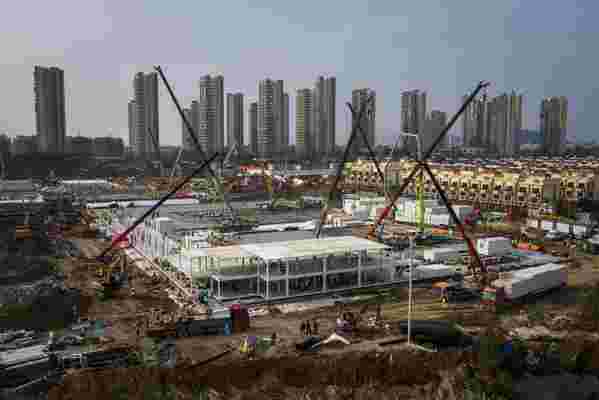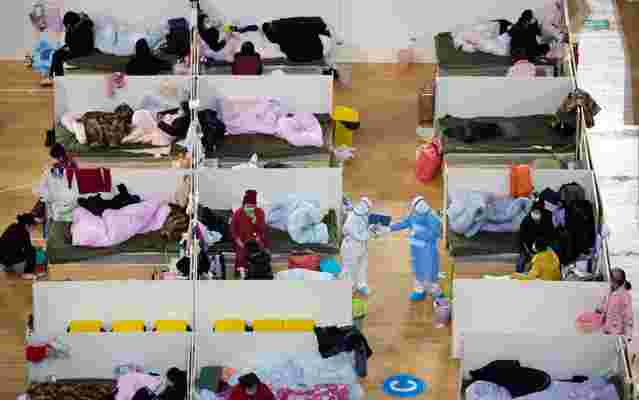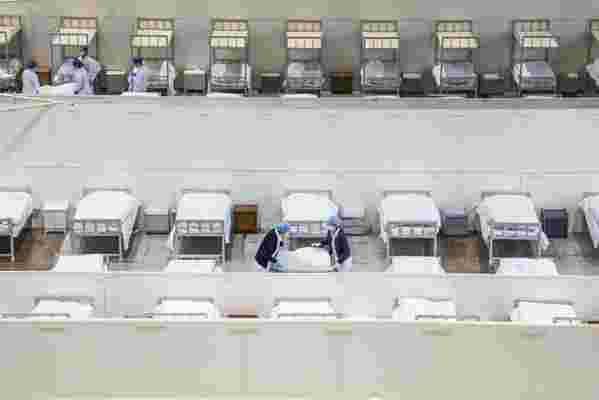During a news conference on Wednesday, President Trump announced that he’s dispatching the Navy hospital ship USNS Comfort to New York Harbor to support the coronavirus response efforts. With each passing day the news becomes more dire in the U.S., as the number of confirmed cases of COVID-19 continues to rise. This means, of course, that hospitals will see a surge of new patients, many of them elderly or with compromised immune systems.
Pandemics aren’t new (the earliest epidemics date back to Neolithic times), yet the ways in which we handle them has drastically altered over time. This, of course, is due to the technology and resources we are now afforded. Take China, for example. In late January, when the city of Wuhan was the epicenter of the coronavirus, the country built a makeshift hospital in less than two weeks . By sending patients to such hospitals, and implementing draconian measures to quarantine the public, Chinese officials were able to reverse the staggering number of new cases within the country to just 34 on March 19 (compared to 5,322 in Italy and 4,530 in the U.S. on the same day). This raises the question, should U.S. officials begin the process of swiftly building makeshift hospitals to better mitigate the risk of the virus spreading, while increasing the chances of patient survival?

In January hundreds of construction workers and heavy machinery worked to build a new hospital in Wuhan, China, in less than two weeks.
“Considering the ways we can increase hospital capacity right now is incredibly important,” says Dr. Andrew Ibrahim, a surgeon at the University of Michigan with joint appointments in surgery as well as Chief Medical Officer at the architecture firm HOK. “But building more hospitals shouldn’t be our first response.” According to Ibrahim, the national response to limit travel and large public gatherings has been essential. These decisions will reduce the number of people who contract the virus in the coming weeks and months. Logically, the fewer confirmed patients, the less need for additional hospital beds. In the meantime, health care professional are adapting to the new requirements that are expected of them during these dire times. “Hospitals are quickly learning they have more flexible capacity than previously thought. Many clinic visits are converting to telehealth visits, made easier now that elective procedures are being rescheduled or canceled, and lower risk procedures are moving to other smaller facilities—thereby freeing up capacity at the main hospitals,” says Ibrahim. “Areas of the hospital taken up by these services can potentially be converted to meet coronavirus treatment demands. For example, an operating room for elective procedures could potentially become an intensive care bed, as it already contains a mechanical ventilator and appropriate air circulation.”
“The number of people who get the virus over the next few weeks and months will be the difference in our hospitals being able to handle the clinical demand,” Ibrahim adds. “In the next two weeks we will have a much better sense of how well we have slowed the spread of the virus, to gauge whether our existing hospital capacity will be adequate.”

Medical personnel treat patients with coronavirus in a temporary hospital set up in a sports stadium in Wuhan, China.
Some physicians, however, believe the time to act is now. “We are not prepared to deal with a rapid and severe surge of patients—we’re just not,” Dr. Christopher Tedeschi, an emergency physician and assistant professor at the Columbia University Medical Center, told the New York Times . “We’re sort of planning for what’s going on right now, and we’re trying to make up for lost time, but I’m not sure we’re planning for a month from now, or even two weeks from now.”
If hospitals do become overwhelmed, and new facilities need to be erected, Ibrahim still believes other avenues exist outside of building makeshift hospitals. “There are clearly areas already being hit the hardest by the pandemic including New York City, Seattle, and San Francisco.” Ibrahim argues that the locations already have a number of facilities that can more easily and efficiently be turned into wards to treat the sick. “Many of these urban locales now have empty college dorms, schools, hotels, airports, office buildings, and stadiums. They also all have active, partially built construction. Why couldn’t an empty school—that we often use as a polling place for voting—serve as a screening clinic? Or a hotel now under construction near a hospital be modified to include additional intensive care unit wards? Those may be more efficient ways to quickly increase our hospital capacity, especially in these metropolitan areas.”

Medical staff members set up beds an exhibition center converted into a hospital in Wuhan, China.
Hospitals and makeshift treatment centers will require several crucial elements to treat COVID-19 patients, particularly those with respiratory failure. “Sick patients will require rooms that can be isolated with negative air flow circulation to keep the air coming in, not leaving the room,” says Scott Rawlings, a global director of health care planning and design for the architectural firm HOK. “We will also require mechanical ventilators and personal protective equipment (also referred to as PPE) to ensure that health care workers do not become infected while taking care of patients. We are already seeing a shortage of PPE, and there is concern that a similar problem may occur with hospital ventilators.”
Considering the shocking fact that it took three months to reach 100,000 COVID-19 cases worldwide, and a mere 12 days for the next 100,000 cases to be confirmed, we have a staggering few months ahead of us. While the proper course remains unclear, what is certain is that panic is one of the great contagions of a pandemic—and every decision our leaders make right now will have a profound impact on the weeks, months, and years to come.
